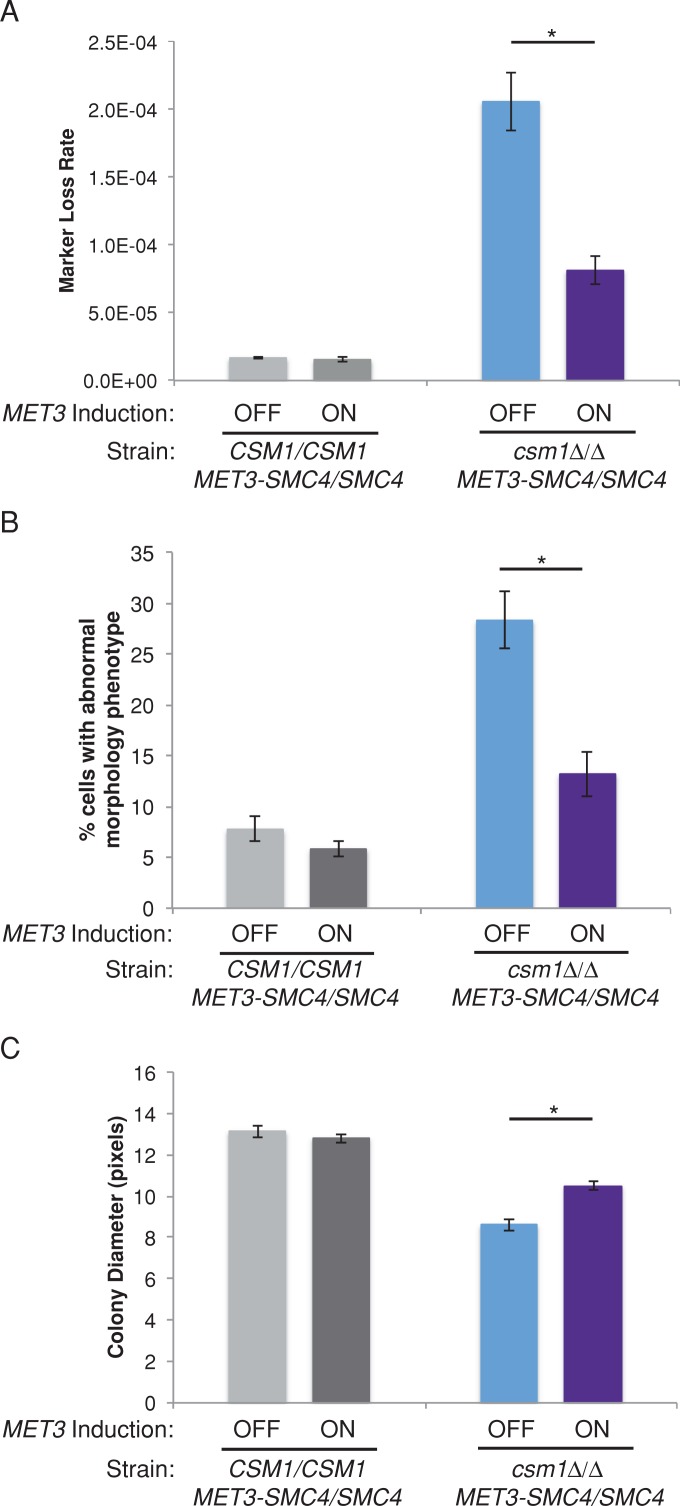FIGURE 5:
Overexpression of SMC4 suppresses the monopolin-deletion phenotype. (A) Fluctuation analysis of loss of GAL1 in CSM1/CSM1 and csm1Δ/Δ MET3p-SMC4/SMC4 strains during growth in repressing conditions (SDC+Met+Cys, normal expression) and activating conditions (SDC-Met-Cys, overexpression). Loss of GAL1 was quantified by plating cells on nonselective media and media containing 2-DOG to select for loss of GAL1. Colony counts were used to calculate the rate of loss per cell division. Results are mean ± SEM of rates calculated from at least three experiments, each with eight cultures per condition. Significance between inducing and noninducing conditions was determined by two-tailed paired t test. *p < 0.05. (B) CSM1/CSM1 and csm1Δ/Δ MET3p-SMC4/SMC4 strains were grown in repressing conditions (SDC+Met+Cys, normal expression) and activating conditions (SDC-Met-Cys, overexpression) for 6 h. Cells were stained with DAPI and imaged at 1000× total magnification with a DAPI filter set. The percentage of cells with abnormal nuclear segregation and/or morphology was determined as in Figure 2. Results are mean ± SEM of three biological replicates. Significance between inducing and noninducing conditions was determined by two-tailed paired t test. *p < 0.05. (C) Colony size was used to quantify growth of CSM1/CSM1 and csm1Δ/Δ MET3p-SMC4/SMC4 strains. Strains were grown on SDC+Met+Cys to repress the MET3 promoter (normal expression) and SDC-Met-Cys to activate the MET3 promoter (overexpression). Colony sizes were measured after 48 h incubation. Data shown are mean ± SEM of three experiments. Significance between inducing and noninducing conditions was determined by two-tailed paired t test. *p < 0.05.

